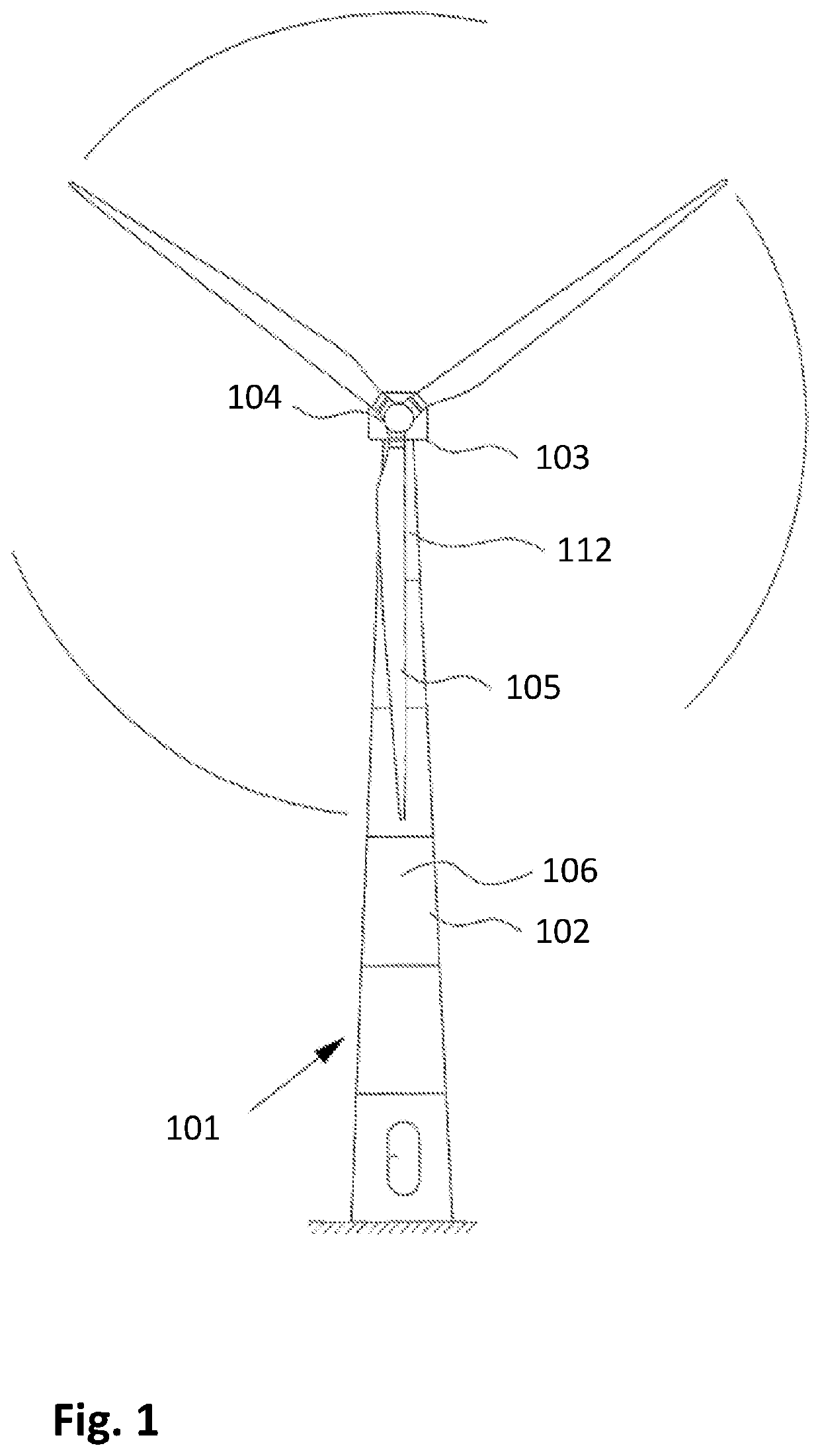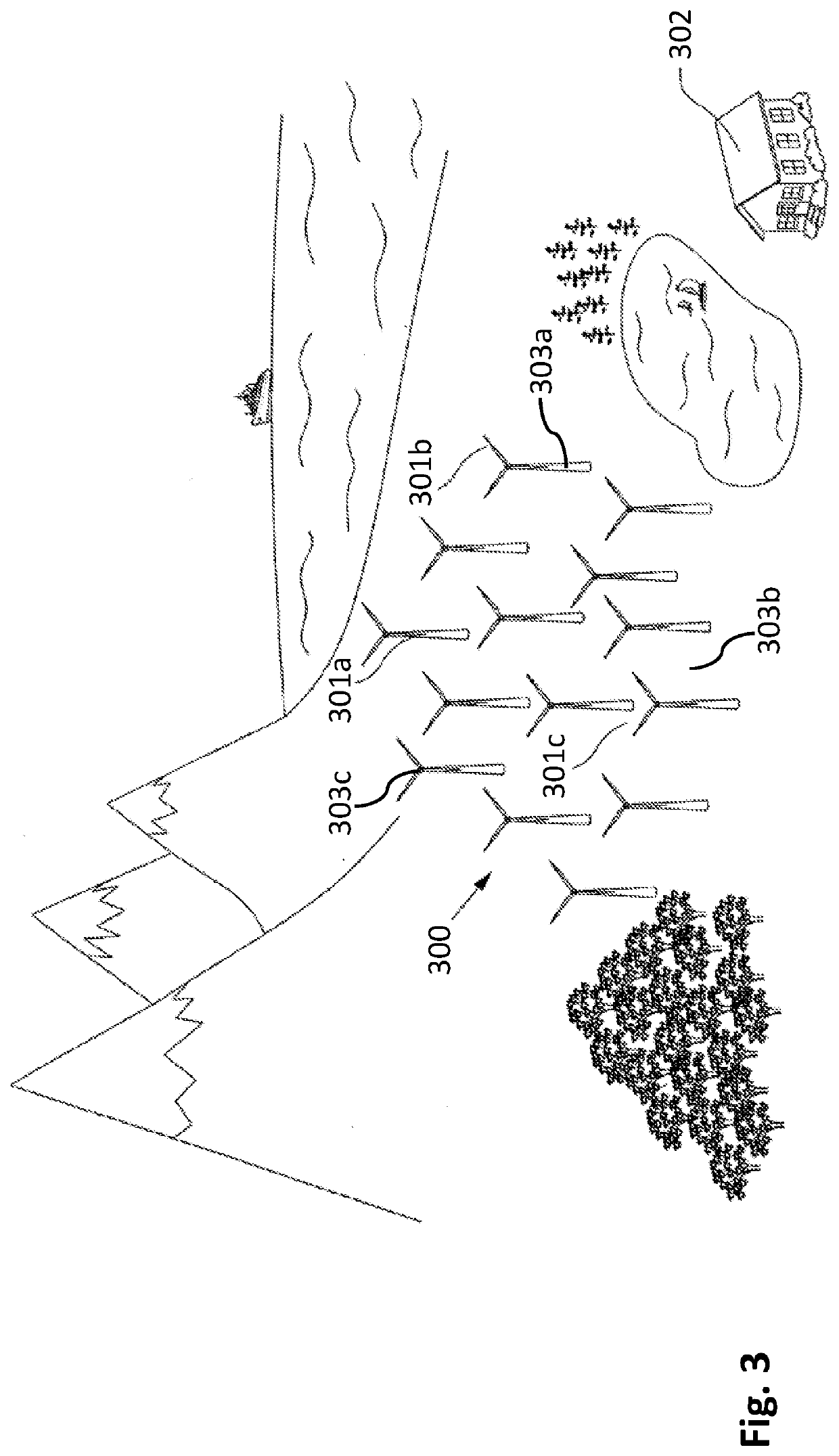Messaging to indicate tonal noise
- Summary
- Abstract
- Description
- Claims
- Application Information
AI Technical Summary
Benefits of technology
Problems solved by technology
Method used
Image
Examples
Embodiment Construction
[0046]FIG. 3 illustrates a wind power plant (300) including a number of wind turbines (301a, 301b, 301c) and a neighbouring area (302), in which a third party resides. The wind power plant may comprise a single wind turbine, or may contain a plurality of wind turbines. The wind turbines may be any type of wind turbines known in the art.
[0047]Within the vicinity of the wind power plant, there are sensors (303a, 303b, 303c). There may be one sensor, or there may be a plurality of sensors. Some sensors may be of the same variety, or they may be of different varieties. Some sensors may monitor the same parameters, or they may monitor different parameters. Further, some sensors may be of the type of existing CMS sensors commonly used in the art, or they may be dedicated sensors for implementing a method according to an embodiment of the present invention, or they may be a combination of the two.
[0048]A Condition Monitoring System (CMS) is a system known in the art that is associated with...
PUM
 Login to View More
Login to View More Abstract
Description
Claims
Application Information
 Login to View More
Login to View More - R&D
- Intellectual Property
- Life Sciences
- Materials
- Tech Scout
- Unparalleled Data Quality
- Higher Quality Content
- 60% Fewer Hallucinations
Browse by: Latest US Patents, China's latest patents, Technical Efficacy Thesaurus, Application Domain, Technology Topic, Popular Technical Reports.
© 2025 PatSnap. All rights reserved.Legal|Privacy policy|Modern Slavery Act Transparency Statement|Sitemap|About US| Contact US: help@patsnap.com



